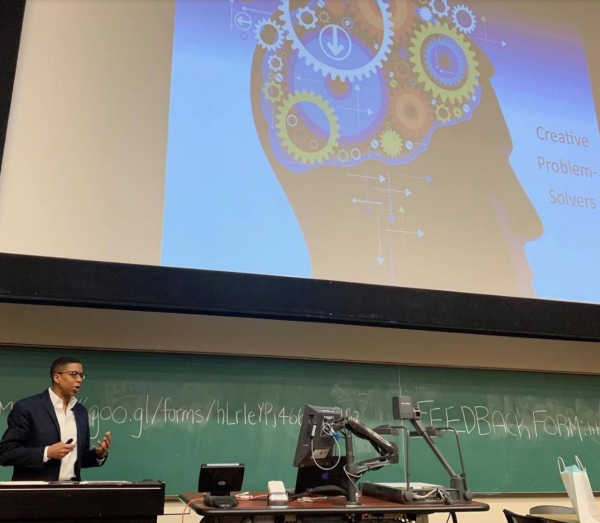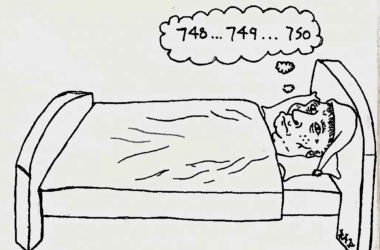Nanotechnology is revolutionizing healthcare systems. Self-driving cars are changing how we navigate our roads. The world has entered an unprecedented era of technological innovation, and scientists are making novel discoveries that will extend and improve the quality of our everyday lives.
Ainissa Ramirez, a world-renowned materials scientist and science evangelist, drew in her audience with these scientific anecdotes during her keynote presentation on Feb. 1, the culmination of SUS Academia Week 2019: To Science and Beyond.
A Google search will yield an extensive list of Ramirez’s accomplishments: She has directed the award-winning children’s lecture series Science Saturdays, hosted two popular-science video series entitled Material Marvels and Science Xplained, and was an assistant and associate professor of Mechanical Engineering & Materials Science at Yale University. She has also been profiled in many publications ranging from the New York Times to Scientific American, was named one of the world’s 100 Top Innovators by MIT’s Technology Review, and holds six patents.
Her many accolades have not made Ramirez inaccessible: She provided a candid picture of her nonlinear journey to becoming a scientist. She also highlighted the importance of finding a community in university and beyond, and the influential role that mentors can play in students’ lives. Although she primarily focused on the value of STEM education, Ramirez also mentioned the benefits of a holistic education that incorporates the arts as well. Furthermore, she stressed how policy makers need to take systemic barriers, of class, gender, and race, for instance, into account to make high-quality education accessible for everyone.
When asked how to make science interesting to the general public, Ramirez referred to the value of communicating facts and stories that people will be curious about.
“A couple of years ago, I wrote a book about the science behind football [and concussions],” Ramirez said. “Now, I could say, ‘I’m going to talk about biology and neuroscience.’ But, I don’t do that. I talk about why woodpeckers don’t get concussions. That’s the hook, and people get excited by that, and then you can draw them in.”
She also explained that inspiring people to become creative problem-solvers is key to enabling novel scientific solutions. This teaching method implies an increased focus on learning, rather than just test scores.
“We’re so focused on testing that we’ve forgotten about the learning,” Ramirez said. “People are afraid to make mistakes. They want to get a right answer, and they’re always looking for reassurance. That’s the antithesis of what you need for creativity. I talk about making friends with failure [.…] It’s not really about hitting milestones. It’s really about […] developing into the person you want to be.”
As her presentation drew to a close, audience members were left inspired to find ways to use science as a tool for positive change.
“There was definitely this sense of ‘we can change the world’ at the end,” Nadia Bichri, U2 Science and co-director of Academia Week, said. “People were asking very big questions and very specific questions, and she was still like, ‘Yeah! Get on social media, or go to this page, or go to this.’ She was very knowledgeable on where to start all of these changes.”
Janani Ramamurthy, U2 Science and co-director of Academia Week, was delighted at the impact that Ramirez had on attendants.
“It’s really beautiful when you see people who are just there to learn, and they’re taking notes, and it’s not even for a class,” Ramamurthy said. “I think that’s related to the message I want people to take away from the keynote. Just keep pushing yourself and putting yourself out there and don’t be afraid of the possibilities.”









